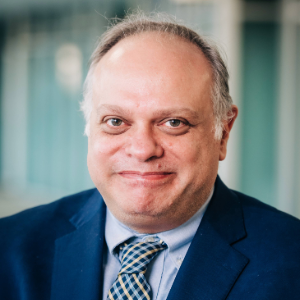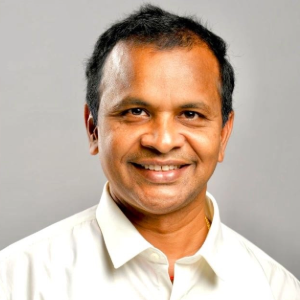 Bassel F. El-Rayes, M.D.Bassel El-Rayes, M.D., professor in the division of Hematology and Oncology, has been named the latest recipient of the school’s Featured Discovery Award. This recognition celebrates significant research contributions made by faculty and highlights the impact of their scientific advancements.
Bassel F. El-Rayes, M.D.Bassel El-Rayes, M.D., professor in the division of Hematology and Oncology, has been named the latest recipient of the school’s Featured Discovery Award. This recognition celebrates significant research contributions made by faculty and highlights the impact of their scientific advancements.
El-Rayes' study, “Mechanism of enhancing chemotherapy efficacy in pancreatic ductal adenocarcinoma with paricalcitol and hydroxychloroquine,” was published in Cell Reports Medicine.
Pancreatic cancer is a condition notoriously difficult to treat. Traditional therapies are often ineffective against persistent challenges, such as dense scar tissue, a weak immune response, and cellular survival mechanisms like autophagy.
Through their research, El-Rayes and his team identified two common drugs that could combat the challenges associated with traditional therapies. Hydroxychloroquine, commonly used to treat malaria or rheumatic diseases, and vitamin D have been shown to enhance the effects of chemotherapy in animal models before being used in clinical trials, where the same effects were observed in patient samples. El-Rayes said, “We demonstrated that this combination can enhance the effects of chemotherapy, affect autophagy, lower fibrosis, and drive immune cells into the tumor environment.”
 Ganji Purnachandra Nagaraju, Ph.D., D.Sc.“Conducting this research on enhancing chemotherapy efficacy in pancreatic ductal adenocarcinoma (PDAC) using paricalcitol and hydroxychloroquine has been both intellectually stimulating and deeply meaningful,” said first author Purnachandra Nagaraju Ganji, Ph.D., D.Sc. “PDAC remains one of the most aggressive and lethal cancers, and our goal was to explore innovative strategies that could overcome the tumor’s resistance to treatment.”
Ganji Purnachandra Nagaraju, Ph.D., D.Sc.“Conducting this research on enhancing chemotherapy efficacy in pancreatic ductal adenocarcinoma (PDAC) using paricalcitol and hydroxychloroquine has been both intellectually stimulating and deeply meaningful,” said first author Purnachandra Nagaraju Ganji, Ph.D., D.Sc. “PDAC remains one of the most aggressive and lethal cancers, and our goal was to explore innovative strategies that could overcome the tumor’s resistance to treatment.”
The Heersink communications team met with El-Rayes to gain insights into the study and help raise awareness about both the research and the Heersink School of Medicine.
What compelled you to pursue this research?
The limited therapeutic options in pancreatic cancer, the excellent safety profile of vitamin D, and the potential benefits of hydroxychloroquine are all reasons we chose to pursue this research. The complementary mechanisms of action of vitamin D and hydroxychloroquine also made this a desirable regimen to develop.
What was your most unexpected finding?
The most unexpected finding was the observation of an increase in immune effector cells (good immune cells) in the tumor environment. We observed this in mouse models and then in patients. This opens the door for us to consider using this regimen in conjunction with immune therapy approaches in pancreatic cancer.
What is your research’s relevance to human disease (if applicable)?
Pancreatic cancer is set to be the second leading cause of cancer death in the United States within the next decade. Stage by stage, the mortality of pancreatic cancer is higher than that of any of the other common cancers (breast, lung, prostate, or colon). Pancreatic cancer is rarely diagnosed early, and even when it is diagnosed early and treated with surgery, it tends to recur. This means that the only way to impact the outcome is either to screen and diagnose before cancer sets in or to improve systemic therapy.
The treatment regimen studied in this paper can potentially be a key component of other future regimens. It is relatively low-cost, making it more accessible in the United States and worldwide. However, more research and larger trials are needed to establish this regimen as a treatment for pancreatic cancer.
When did you know you had an important discovery?
When we observed many of the effects described in detail in animal models in the patient samples, we knew that this research could have a significant impact on how we approach this disease.
What do you find makes the science community here unique?
The ability to connect basic scientists with clinical research, to translate discoveries into treatments that impact patient outcomes. This is possible at UAB because we have basic and clinical research under the same roof. It is also possible and unique here at UAB because we have people who are very collaborative and willing to work together to advance science and improve the health of our patients and community.